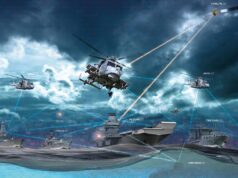Indonesian oil company Pertamina is planning on buying an Airbus A400M, according to local media.
“The rescue mission for the Palu earthquake could be implemented quickly because the Airbus A400 could land on the short runway yet carry a larger number of passengers than Hercules planes,” Undersecretary for financial, survey and consulting services Gatot Trihargo said recently, as quoted by kontan.co.id.
With the new aircraft, the Jakarta Post reported, the company could transport cargo to Papua as well as other remote regions, the official noted, adding that the A400M was expected to arrive this year or next year.
Who operates the A400M?
The Malaysian fleet of four is now in service; the United Kingdom has received 22 of the 22 it ordered and will soon be forming its second operational squadron. Germany has 16 A400Ms; France operates 13; Turkey has five that have been flying intensively; and in the last year, Spain began operations with two aircraft now in service and more to come. All told, the A400M fleet has flown more than 29,000 hours say Airbus.
After Hurricane Irma’s devastation in September 2017, several European countries dispatched A400Ms with disaster relief supplies to the Caribbean. The UK, France and Germany each deployed two A400M airlifters; Germany’s aircraft were sent on behalf of the Netherlands to evacuate citizens to Europe.
While several types of military airlifters were used, the A400Ms showed their worth – being able to cross the Atlantic more quickly than the C-130 Hercules aircraft that also were sent to the region, while carrying a useful load say the MoD.
The Airbus-built transports were able to make the trip with only one refuelling stop instead of the three required by C-130s, and arrived carrying more cargo. The Royal Air Force delivered equipment such as tractors, and the French Air Force carried an Airbus-produced Puma helicopter on one deployment flight – a highly valuable resource to have on-site at the beginning of a relief operation.
Once in the Caribbean, the A400Ms proved extraordinarily effective with their ability to operate from shorter airfields, performing inter-island flights where they could carry nearly three times as much cargo as the C-130.
Having more than proved itself in HADR operations, the A400M is first and foremost a military transport. The RAF increasingly is inserting its A400Ms into logistic duties, supporting coalition forces in the Middle East; while the French Air Force has been using it in the same way in Mali and Niger – where the A400M is demonstrating the airlifter’s positive results from unpaved runways.
The Turkish Air Force, having upgraded from earlier-generation twin-engine C-160 Transall airlifters, has been extensively using its A400Ms, deploying to Mogadishu for the evacuation of Turkish citizens, and flying to Russia in support of VIP operations.
As the A400M increasingly becomes integrated into worldwide air forces, this Airbus-manufactured aircraft is setting the standard for air mobility operations.
Recently, Airbus said buyers had agreed to work on contractual changes, including a ‘new roadmap’ for development and completion of capabilities for the A400M, in simple terms less promised capabilities are to be integrated and delivery is to be slowed.
Airbus had already taken a writedown of 1.2 billion euros one year ago after the A400M suffered engine gearbox problems and delays in fitting parachuting capacity and advanced defences. It is understood that Airbus has been urging partner nations to cap its exposure to fines caused by technical delays to the programme.
We understand that Airbus is expecting the rate of production to fall from 19 per year to 15 in 2018 and 11 in 2019 in order to help to extend the life of the programme and increase the chance of export sales.













I believe it was the TUDM(RMAF) which flew their A400M into Palu with relief supplies and a bulldozer (which could not fit into a C-130). Must have really impressed the Indonesians with its load carrying capacity flying into Palu.
Interesting development considering the LM-100J is expected to clean up in this market as older LM-100 and various Soviet era types time expire.
I was under the impression (according to this website) that the RAF sent C17s:
“””C-17 and Voyager aircraft to fly British troops and aid to Caribbean after hurricane”””
Aircraft loaded with British troops and aid will leave RAF Brize Norton this morning for the Caribbean, as part of the relief effort for areas devastated by Hurricane Irma.
A C17 and a Voyager will fly to the Caribbean to deliver rations, water, medical equipment and other humanitarian aid. 230 soldiers will leave RAF Brize Norton for the Caribbean today, a combination of both Royal Marines and Royal Engineers. The supply ship RFA Mounts Bay has already been deployed to help deal with the aftermath of Hurricane Irma with 40 Royal Marines on board, as well as army engineers and equipment. HMS Ocean will head to Gibraltar to pick up relief supplies before joining her.
Well your impression was wrong.
I have often wondered why cargo carriers such as UPS use modified airliners instead of aircraft designed specifically for cargo.
cheaper to buy & operate.
Many expensive military grade integrated communication and electronics (such as EM AND ECM hardened) and armour superfluous to civilian operation.
Hope that the A400M is taking the strain off the C17….and keeping their airframe hours to the minimum. We should have given the RAF their ten C17s….maybe Trump could get a couple of surplus USAF examples out of storage. But, maybe retaining some of the C130J for tactical operations has released enough A400m’s for strategic purposes?
I read somewhere that the UK was going to keep some modified C-130 a/c for special ops missions. The SAS thought the A400M was too large for some missions.
Yes David.
14 C130 retained.
47 Squadron is the SF supporting unit.
Herodotus – from what I have read the last Two C17’s off the production line were waiting for a buyer for some time,its a pity the RAF didn’t try to secure at least one of those but perhaps with the A400 coming on stream they just didn’t see the need,or more likely all funding was commited to the A400’s.
Odd to think that for some time a strategic airlift capability was not considered essential. I can’t remember quite how long it was between the disposal of the Short Belfast and the arrival of the C17. C130s of various types had to cover! Oh and I believe the RAF wanted 10 (they had 10 Belfasts), so I think it must have been MOD or the Treasury that pulled the plug!
Late 70s I think? The Belfasts were all gone by the time Corporate arrived. I may be wrong but recall around 2004 for the first 4 C17, which at that time were leased.
I assume with the Cold War and the central front and GIUK Gap and Atlantic dominating UK military thinking throughout that period a strategic transport capability like that was deemed un necessary.
The disastrous Nott review which was to have put paid to our Amphibs would have been another example, and possible loss of Endurance too.
All so short sighted.
Belfasts stood down in 1976. 3 were then operated by Heavylift and were indeed used prolifically for MoD during Operation Corporate and after.
So indeed short sighted, as they could have remained in house for use by the RAF.
A lot of the potential opponents were accessible by sea, its only when you get to landlocked and lacking highways infrastructure theatres like Afghanistan that you need lots of air transport again.
Cheapest place to get A400M in the future to augment or grow RAF will be from the over-ordered Luftwaffe. They have 53, and want to get rid of at least 13 if not more.
Spain is another possibility for additional surplus airframes for the RAF, if it’s considered in the future.
Chances are, a number of Spanish airframes will remain in store at the factory…
The politically minded procurement, means Spain have contacted for more A400’s than they can afford or ever intended to operate.
Now the bugs are slowly being worked out, it’s becoming a fantastic aircraft …. Though one that Airbus wish they had never started!
Spain is reportedly in negotiations to sell a few of theirs to South Korea. Germany on the other hand are looking to common fleet pools with other European countries under integrated defence partnerships to help spread the upkeep costs.
When you consider the cost of this aircraft in absolute terms, against its carrying capacity, would we have not been better off saving £2.5bn (22 x A400M) and stuck to buying 6 more C17’s (£1.2bn) plus replacing (with new) the whole C130 fleet and still have change…… then consider all the other savings from having 2 airframes to support instead of 3, parts, maintenance, training etc. 77 tonne lift for £200m or 30 tonnes (if your lucky) for £160m. Can someone educate me as to why this was a good purchase ?
Its three in one. Air-to-Air refuelling, Tactical Transport and Strategic Transport. It can carry more weight and volume than the Hercules (up to three times) while also being capable of light Strategic transport from short/rough landing strips while the C17 can only operate from semi-prepared (doesn’t require paved but does require them to have been flattened and freshly cleared of debris first) runways and with limited load when doing so. Its capable of self deploying from theatre to theatre whilst carrying a small goods load/troops (French case it performed a strategic transport to the Caribbean whilst also carrying a helicopter and only requiring one mid air refuel while the Hercules travelled empty and still required 3 top ups).
The Indonesians loved it during their Tsunami relief efforts because it could carry heavy and bulky civilian engineering vehicles into the rough jungle landing strips and the C-130 couldn’t.
Yeah good points there Watcherzero – but most your valid points are against the Hercules. If you compare it against the C17, the latter wipes the floor with it.
Yeah tactical transport you can’t argue with, but AAR, is never going to happen within the confines of the current AirTanker 27 year agreement. From 2008 to 2035, other than in operations with coalition forces, it is my understanding that AirTanker have exclusive rights to refuel UK/RAF platforms.
As I understand it, this is one of the reasons why refueling equipment isn’t fitted elsewhere within the RAF, and also why the V22 Osprey isn’t being considered for use off the carriers – even though they would be FAA and the F35 is supposed to be a joint force, effectively its run by the RAF.
C17 could probably do the French Caribbean drop without refueling and with at least twice the capacity. A400M was originally sold as 37t, but no one believes that, I’m led to believe from reading (again please correct) that 30 tonnes is more realistic, as against 77 tonnes in the C17.
And then how much monies will supporting three airframes cost over two over the lifetime of the plane, we’re talking billions and billions here – when monies are short. What would you rather have ? 8xC17, 22xA400M & 14xC130; or 14xC17 and previously 24xC130. No brainer for me – your thoughts Sir as always.
It’s the “Goldilocks and the 3 Bears” premise. In some situations, like the tsunami relief efforts in Indonesia, that the C-17 is too big, the C-130 is too small, but the A400M is just right.
Towards the end of its production run, there was a rough field version of the C-17 proposed. The idea was to deliver large loads to very near the front. The US Army/Marines were interested, but the USAF already had enough ordinary C-17, so it was never built.